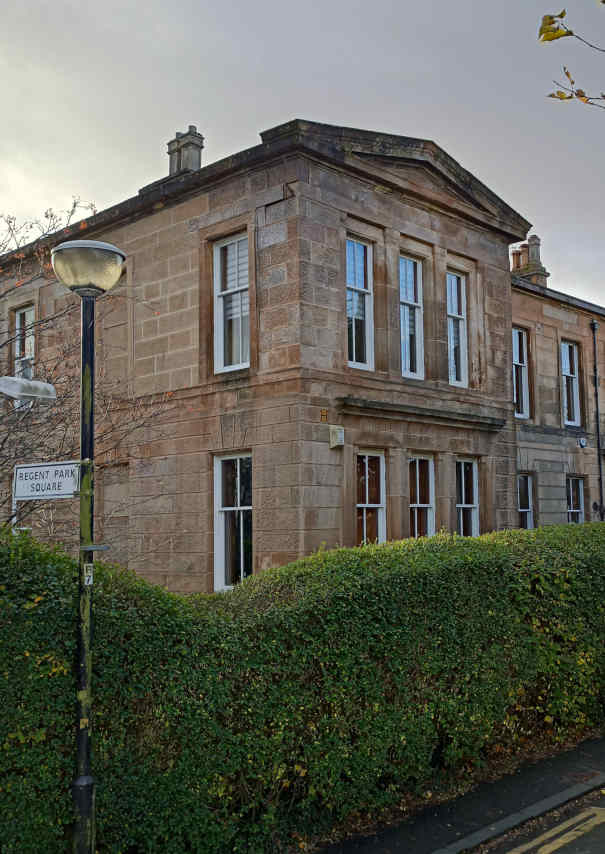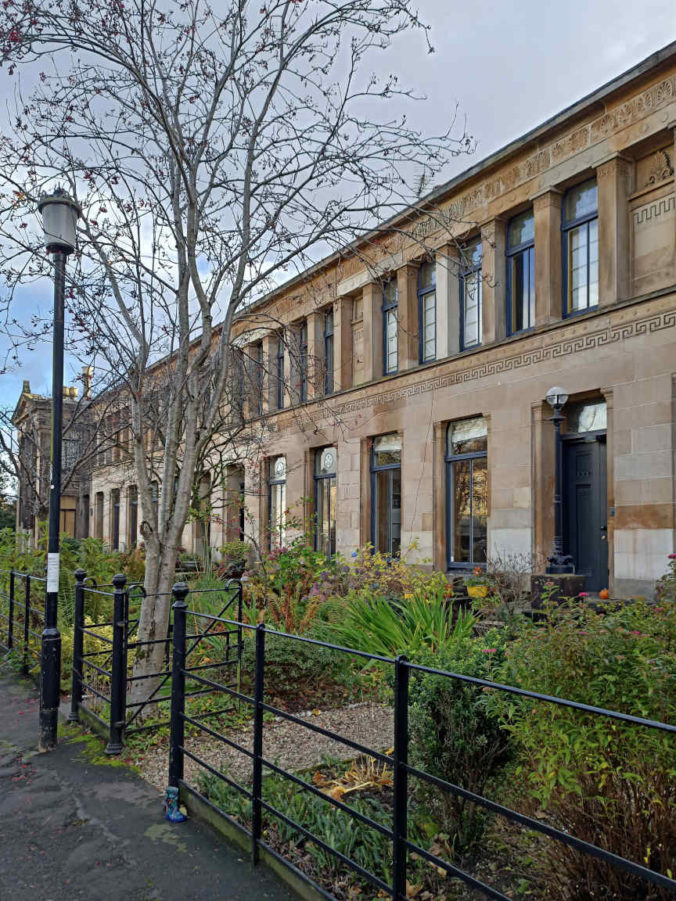The second terrace on Moray Place, 11-17, was built soon after the first, circa 1862, and first occupied around 1864. The initial occupants at No 11 were the Mactear brothers, Andrew and William. The Mactears’ story features photography, chemistry, artificial diamonds, a famous auctioneer and a curious double death.
Category: Biography (page 5 of 16)
Grocers
The first occupant of 5 Moray Place was also the first of three grocers to live there; Gavin Wilson was resident between 1862 and 1865. He was a hamcurer & provision merchant, of Wilson, Ferguson & Co at 62 Little Street in Calton.
He was born in 1822, the second of five children, to William Wilson & Mary Cleland in Mauchline, Ayrshire. He moved to Glasgow in the 1840s and joined the grocery trade. His sister Janet married Hugh Slimmon in 1846 and Gavin moved in and boarded with them and their family for many years. Slimmon was himself a wholesale grocer at 48 Hutcheson Street.
Gavin moved to Moray Place in 1862 but moved out again in 1865 and was back with the Slimmon family in the 1871 census. The Slimmon family ended up at Duneaton Villa, 15 Albert Drive, Pollokshields, as did Gavin, and he died there in 1915 .
My research originally suggested he was unmarried, and didn’t like life alone in Moray Place, but the current owners (see comments) tell me the deeds record that the property was bought in the name of his wife, Annie Ferguson or Wilson, for £510. I can find no trace of Annie, but also no trace of a business partner called Ferguson either. He only briefly traded under that name before disappearing from the PO Directories around 1866; perhaps subsequently he just worked for the Slimmons. So I sense an intriguing tale, but can’t take it further at present.
When investigating the Frazer family’s 85-year occupation of 4 Moray Place, I forgot a minor detail — their early 1870s lodger, one BH Remmers.
Who was he? Turns out he was the most interesting character of the lot!
BH Remmers
Bernhard Heinrich Remmers was born in June 1843 at Hohenkirchen, in the Grand Duchy of Oldenburg (now northern Germany).
He first appeared in Glasgow in 1870, in his late twenties. He was living at Struan Terrace on Victoria Road, and working for Neuffert & Carr, corn factors, an Edinburgh firm with offices on Hope Street. He appears to have travelled back and forth between the UK and Europe, appearing in print in 1872 when co-signing a letter to the papers complaining about the terrible state of the Belgian cross-channel paddle steamers, and in particular his crossing to England on the Comtesse de Flandre .
He returned to Prussia soon after, and married Bertha Berneaud in July 1872 in Stettin (now Szczecin, Poland). A year later they were back in Glasgow, and living with the Frazers in Moray Place, when Bertha gave birth to the first of their four children. Their second was born in Strathbungo the following year.
© 2025 Bygone Bungo
Theme by Anders Norén — Up ↑




Recent Comments